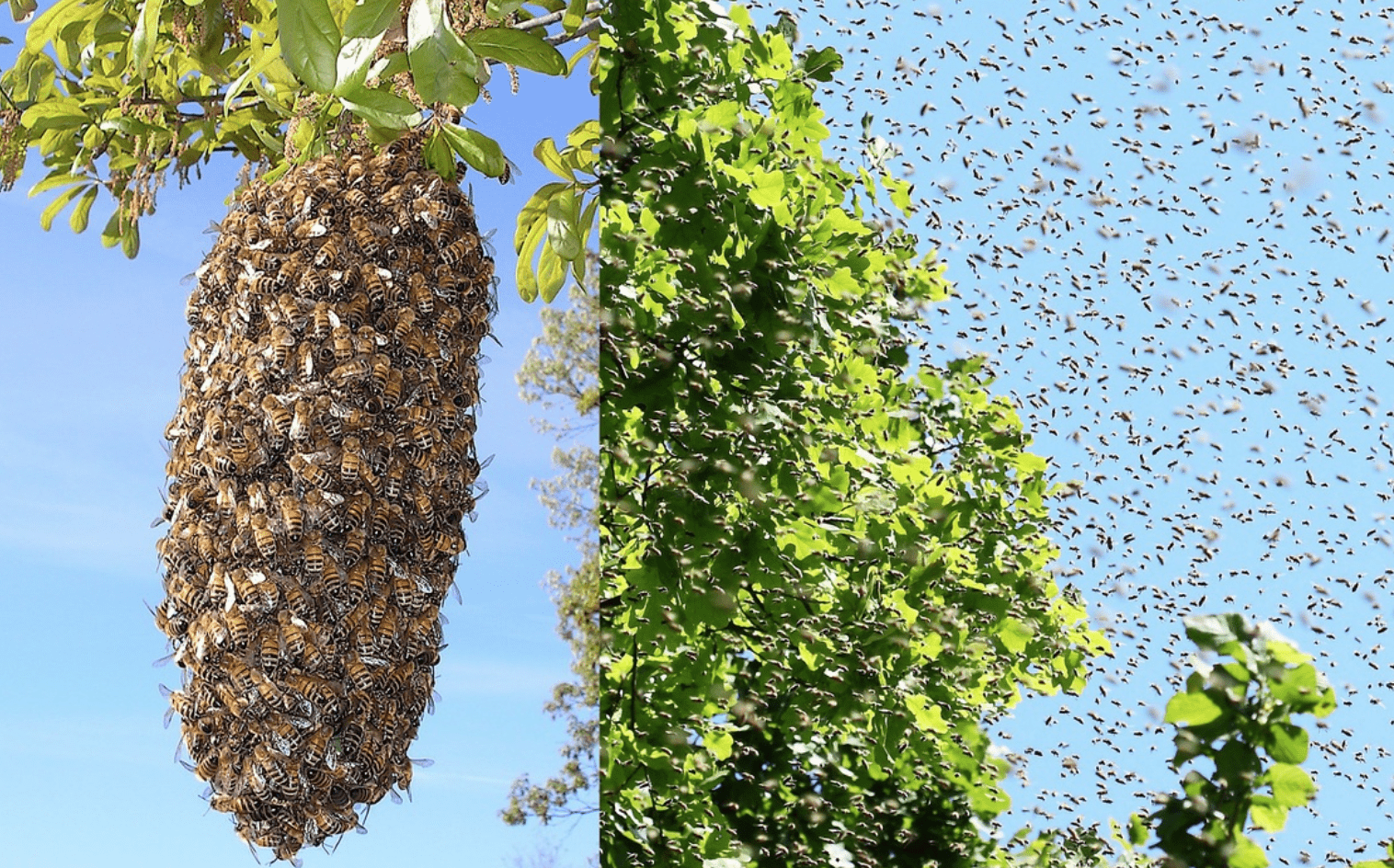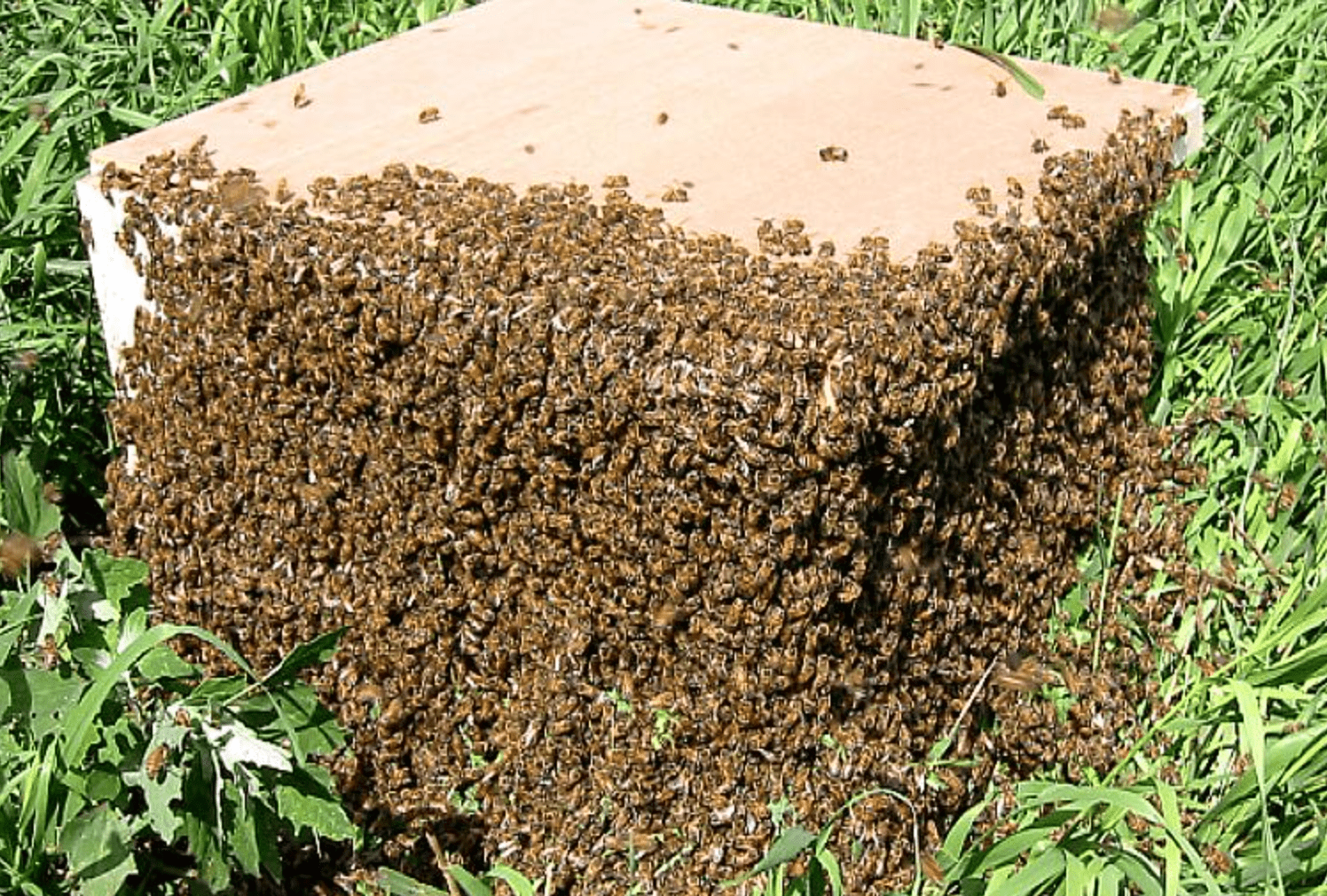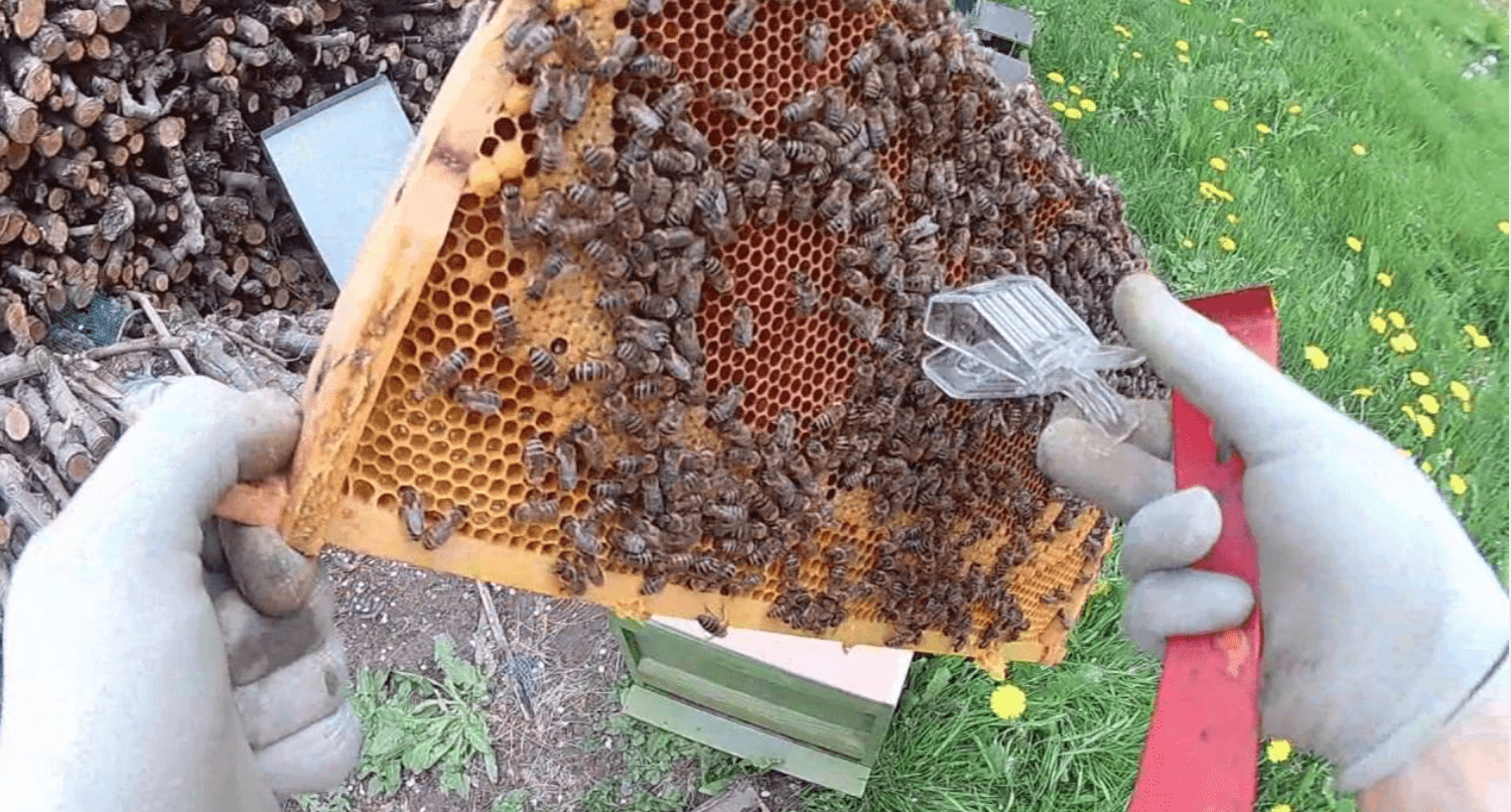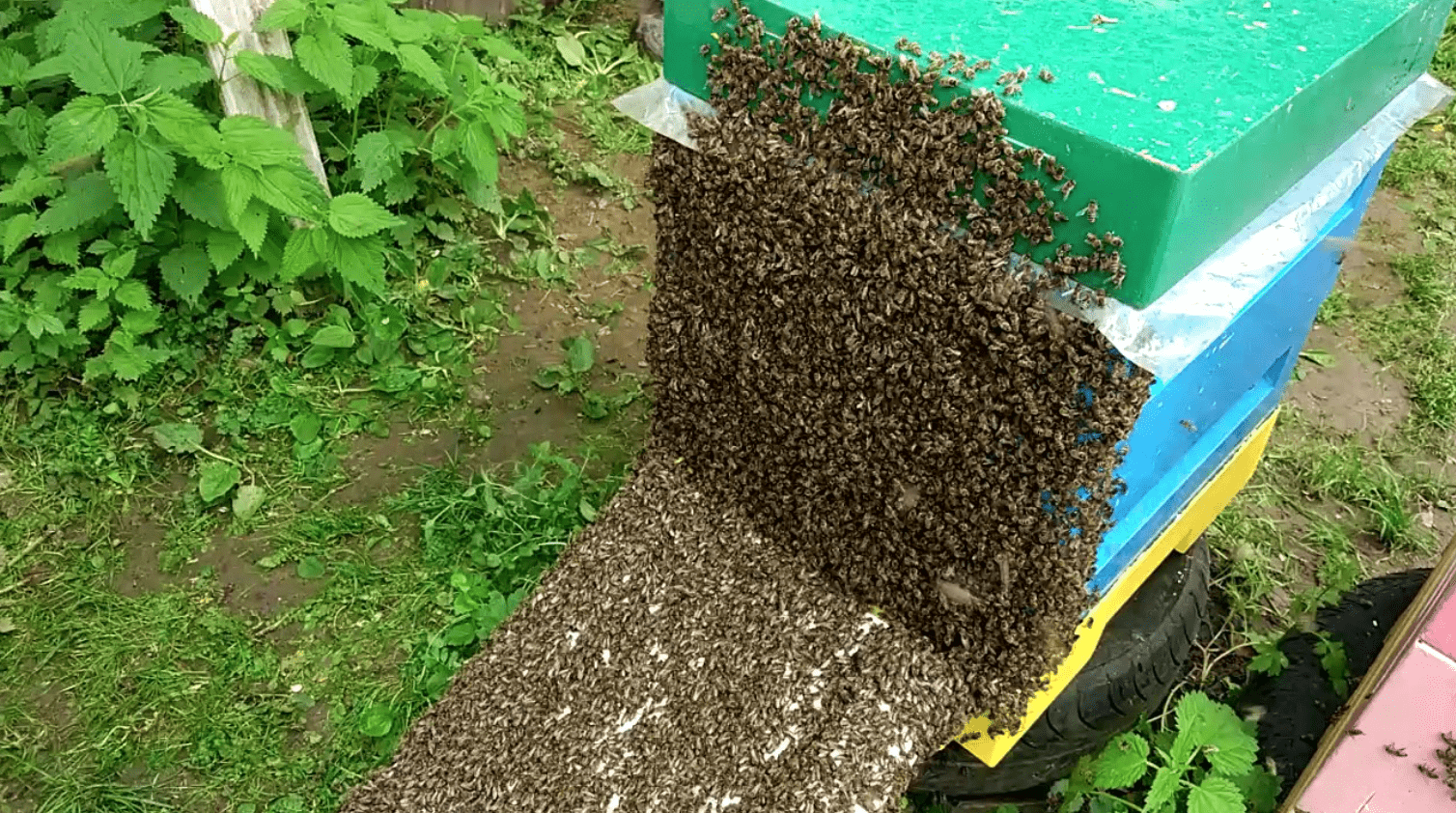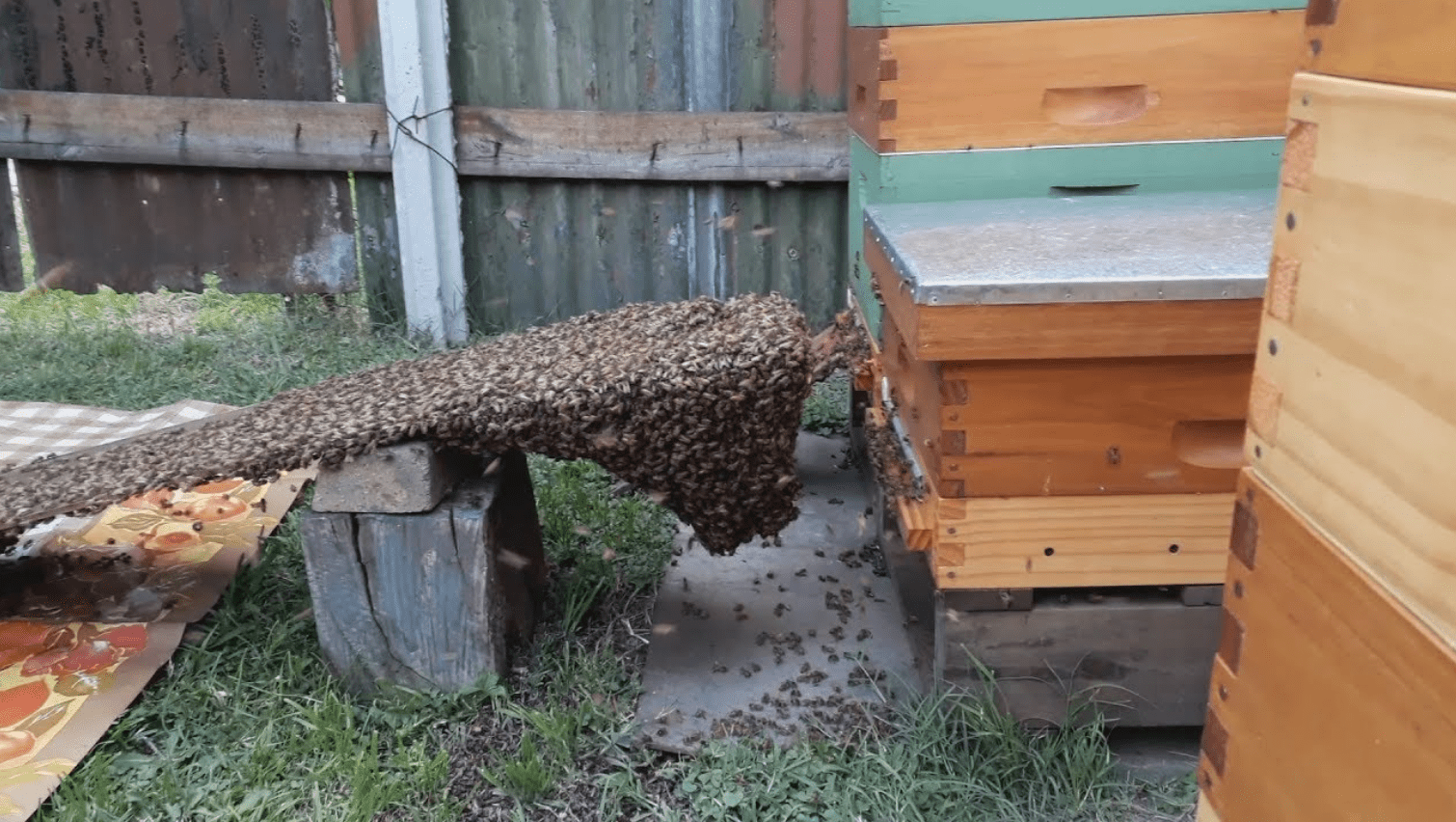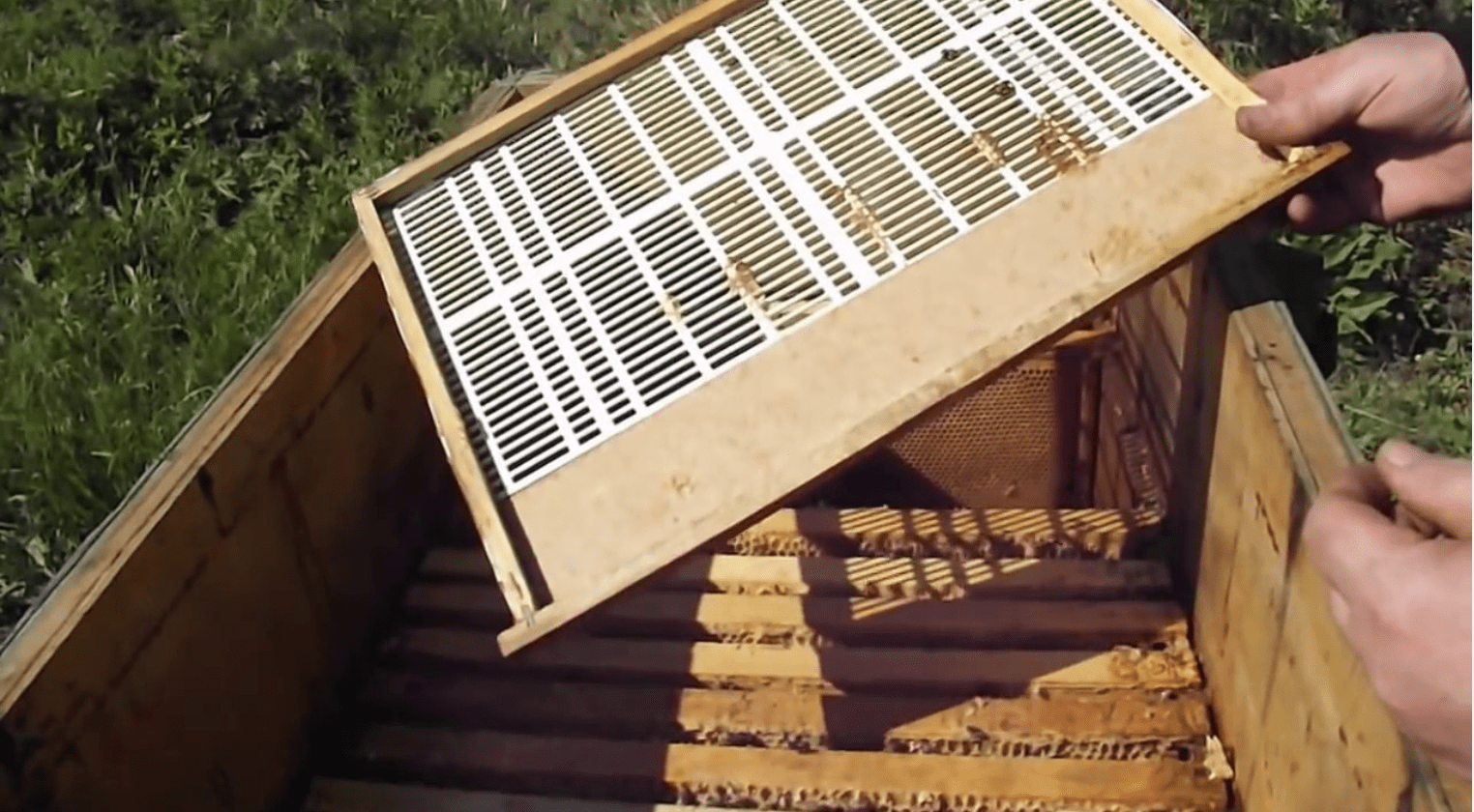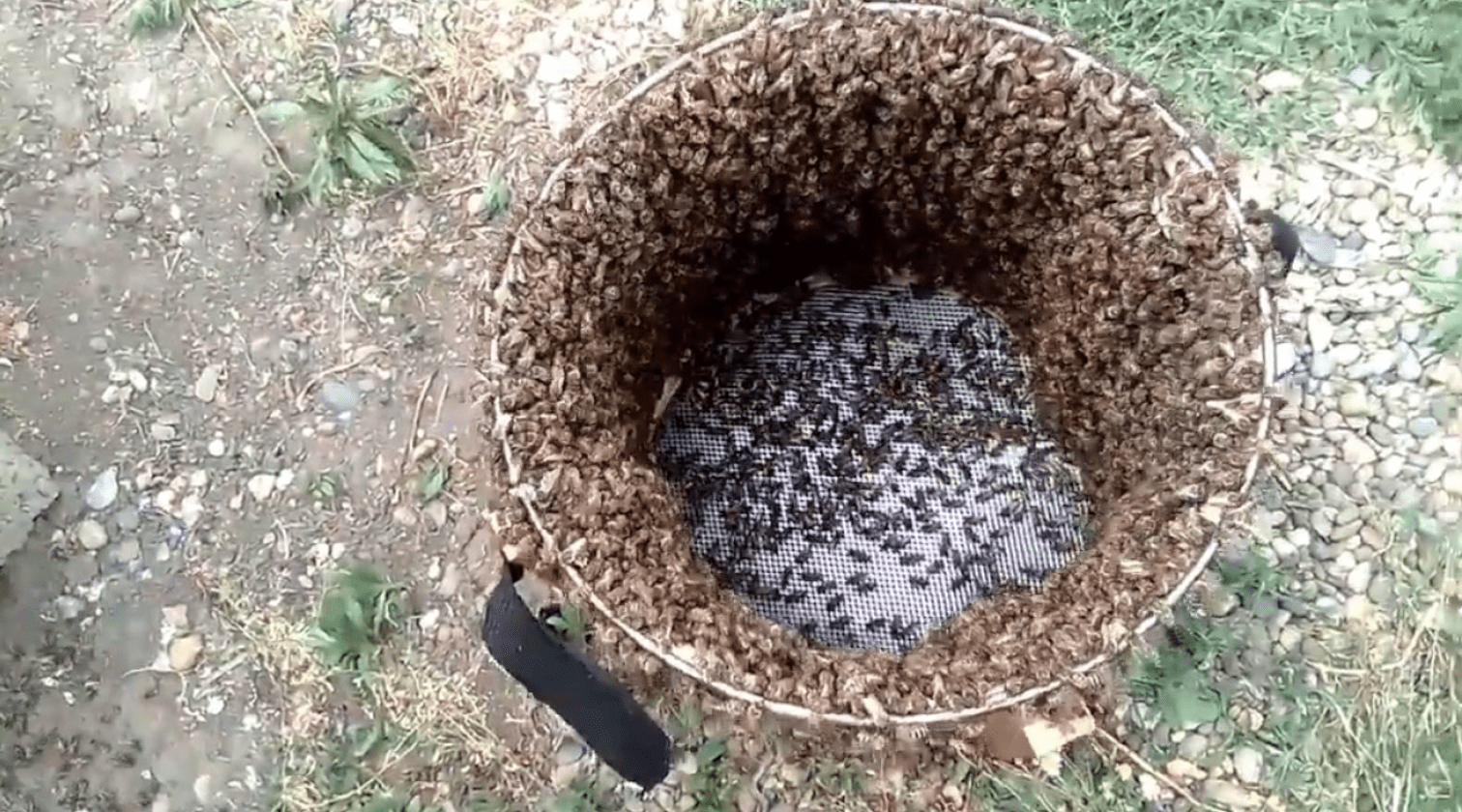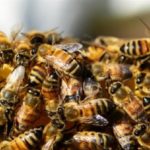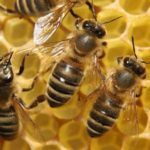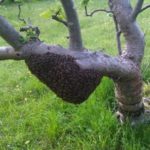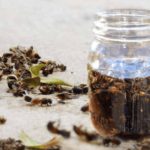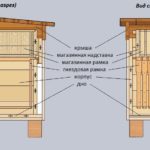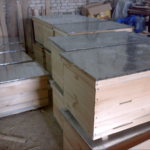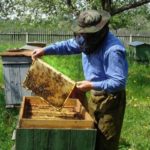Almost every beekeeper periodically encounters swarming bees. This is a rather unpleasant phenomenon in which a swarm of bees is separated from the brood. As a result, a new young layer is formed that wants to function independently. This entails the loss of some worker bees. Therefore, beekeepers often try to fight swarming. To do this, you can use a variety of methods.
What is bee swarming
Bee swarming is the separation of a certain number of insects from the family.As a result, a new layer is formed, which is ready to function independently. This is what leads to the fact that some of the working individuals leave the apiary. In this case, the remaining insects in the hives may be left without a queen. The process ends with the insects having to breed a new queen and gradually increase their strength.
On the one hand, this phenomenon is a positive process, since it leads to the division of the family and allows the apiary population to increase. If the beekeeper misses the moment and cannot catch the separated insects, he will simply lose them.
Therefore, the beekeeper needs to take into account the following points:
- the beginning of swarming periods;
- availability of skills in working with swarms;
- prevention of swarming in the apiary;
- the ability to catch separated bees;
- identification of the uterus;
- ways to encourage insects to swarm in a controlled manner when new layers are required.
Causes and symptoms
Swarming occurs when the bees are ready to reproduce. This is considered a natural process. However, it can cause some inconvenience for the beekeeper.
Most often, swarming begins as a result of overcrowding. The main reasons for this include the following:
- Lack of space for nectar. In this case, the bees begin to accumulate it in the nest. In this case, it is necessary to increase the number of stores.
- Lack of space for laying eggs. In this case, you need to remove the honeycombs and put empty frames.
- Lack of space for a club in the nest. Bees prefer to gather around the queen, so the nest is usually crowded. To organize more space, you need to install slatted inserts.
- The passage of too dense a flow of bees through the nest. The upper entrances will provide the collectors with access to the hive.
To avoid swarming during unfavorable periods, it is worth installing a sufficient number of stores in the house and ensuring high-quality ventilation.
To detect swarming in a timely manner, you should pay attention to the following signs:
- Bees begin to fly out less often for a bribe.
- Flights are made in the evenings, but over short distances. This suggests that the insects are looking for places for a new nest.
- On frames or walls, honey insects begin to gather in large groups. At the same time, they show anxiety and make intense noise.
- Worker bees begin to clean the entrance and holes from propolis that has stuck to the surface. This helps the queen get out unhindered.
- The young queen makes new sounds. This is how she resonates with her competitors who are in sealed cells.
Swarm catching
If it was not possible to avoid the occurrence of the process itself, you will have to catch the bees that are trying to fly away from the apiary. To do this, it is recommended to use single-hull hives or special traps in the form of boxes. Their walls need to be rubbed dry, and frames should be installed inside. To attract individuals, you can use special means, such as “Apiroy”.
Anti-swarming
To deal with unwanted swarming, you can use a variety of methods.
Artificial swarming
To prevent bees from flying away from the apiary, experienced beekeepers use the division method. This procedure helps achieve a number of effects:
- strengthen the bee colony after wintering;
- make the breed better quality;
- reduce the likelihood of illness in the family;
- strengthen and increase the beekeeping industry.
At the same time, today there are several proprietary methods that can prevent an undesirable phenomenon.
Shock therapy
To normalize the behavior of bees and cope with unwanted swarming, shock therapy is recommended. To do this you need to do the following:
- Shake the entire bee colony from the frames onto a special board.
- Completely take away the frames with honey. In this case, the hive must remain empty.
- The procedure is carried out for 3 days. After which the bees begin to lay eggs in specially constructed tongues. This indicates the end of the swarming state. At the same time, the insects themselves kill the extra queens and do not try to fly away.
- Only after this can the frames be installed back.
Simmens method
This method helps to successfully combat unwanted swarming. This option is perfect for hives that have a superstructure. In this case, empty frames and structures with foundation must be installed in the lower part.
After this, you need to launch the entire family, which was previously removed, through the lower hole. As a result, the bees will be divided into 2 categories. So, insects will appear in the hive that will care for the offspring. They will go upstairs. In addition, there will be individuals in the hive that build honeycombs in the lower compartment.
Taranov method
Unwanted swarming often begins in May. To avoid this process, you should use the Taranov method, which helps organize artificial swarming. To implement this, it is recommended to fumigate the insects with smoke in the evening. Thanks to this, the bees will collect full crops of honey.
After this, they need to be shaken off onto the gangway. There they will begin to swirl. After this, you need to move the bees to the swarm and put them in a dark and cool place until the morning. Then you should remove the queen cells, return the insects and load them with work.
Demari method
To stop swarming in June, you can use the Demari technique. This method involves the use of double-hulled hives. The beekeeper advises to simultaneously enlarge the nest. Thanks to this, the mother will have enough space to lay eggs. At the bottom of the body you need to place a special grid that will help control the functioning of the uterus.
The Demari method in beekeeping has the following varieties:
- You need to leave a frame with brood and a mother in the hive. In this case, the remaining frames should be moved to another housing. The first body must be separated from the second using a grid. Then you can add frames with foundation and honeycomb.
- Leave the queen on the honeycombs, and distribute the young bees among other buildings.
- Remove printed brood. In this case, the queen with open brood must be left in the hive.
Kostylev's method
To avoid swarming, you can use Kostylev’s method. To do this, the insects need to be moved in the evening to a gangway away from the hive. The queen cells need to be torn off, and the brood needs to be temporarily moved in the non-swarming system. You need to take the honey frames from the hive and add printed and food frames instead. In the morning, the open brood and gangway must be returned to their place. At the same time, the bees will begin to work on the larvae and replenish their honey reserves.
Measures to prevent swarming and its negative consequences
It is impossible to completely prevent the occurrence of instinct. Therefore, beekeepers need to be able to properly use swarm energy. For example, strong early swarms can be planted with young queens in separate evidence. The forces of such bees will be directed to building honeycombs, raising offspring and collecting honey. By the time the main bribe begins, such a swarm will grow into a strong family.
To prevent swarming or mitigate its onset, beekeepers use the following methods:
- Keeping bees in larger hives. To prevent swarming, beds, multi-hull structures, and others are suitable. It is important to constantly load the insects with various jobs - collecting bribes, raising brood, construction.
- Moving to different honey collection sites.
- Formation of layering from families of free young bees. This is done in regions with a late main bribe.
- The presence in families of exclusively young productive queens, which can maintain a high rate of development of the bee colony.
- Rejection of colonies prone to swarming.
- Rejection of breeds that have a tendency to swarm.
- Using swarm traps. They allow you to return flying insects.
Bee swarming is considered a natural process that has a number of features. However, sometimes it is undesirable. To cope with the problem, special artificial swarming methods can be used.

